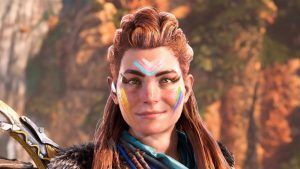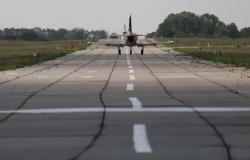- Diablo IV received ray tracing support from Nvidia at the end of March
- After playing for a long time, you won’t want to turn off the dynamic lights at any cost
There is probably no one among game fans who does not know the Diablo series. Games from the genre of action RPGs changed so much that they are still familiarly nicknamed today devil girls and even with the fourth part of the series, it did not lose any of its quality, on the contrary. I also verified that it is a phenomenon in the review, where I spared no praise despite the fact that I swear by the second part and the third did not completely grow to my heart. The fourth installment has been around for almost a year and on this occasion it received an early birthday present from Nvidia in the form of support for RTX technologies such as ray tracing.
Ray Tracing in Diablo IV enhances the gaming experience
But before we look at the impact of the news on the game itself, we must first say a few words about the hardware on which I tested the new gadgets. As in previous cases, I reached for the Asus ROG Zephyrus G16 GU603ZI gaming laptop, which boasts a dedicated Nvidia GeForce RTX 4070 8 GB GDDR6 graphics, a 16″ IPS display with a resolution of 1920 × 1200 pixels and a refresh rate of 165 Hz, a 14-core Intel Core i7 processor -12700H, 16 GB DDR4 RAM or 512 GB SSD NVMe M.2. It meets all the requirements for me to be able to try out new features in Diablo IV and play it comfortably.
The new update from March 28 adds ray tracing to the game, which should make the battles more dynamic and spectacular, and the image quality even better. In addition, there is DLSS 2 Super Resolution support, which allows all gamers with GeForce RTX to accelerate the frame rate, and NVIDIA Reflex support, which ensures the fastest possible response when playing. But how is it in practice? Launch Diablo IV, go to the settings menu and enable the new ray tracing option, this will activate 2 new ray-traced effects that can be individually adjusted and toggled.
Ray Traced Reflections allows bodies of water, pools of blood, and other appropriately reflective game elements to reflect on-screen events. Enemies, attacks, visual effects and other elements are accurately reflected in the environment. Ray Traced Shadows enhance existing shadows and allow shadows from all light sources to be rendered simultaneously. In large co-op battles where the visual effects continuously illuminate the environment, ray traced shadow detail is quite visible.
Each ray-traced shadow boasts precise contact hardening and softening, allowing shadows to naturally soften with increasing distance from where the shadow is cast. In moments of exploration, the overworld, cellars, dungeons and abandoned buildings look even more detailed, and ray-traced shadows naturally cast shadows on and around objects. So much for the theory of what you can look forward to while playing if you have supported hardware. In practice, however, I was slightly embarrassed by the news.
The changes are less visible, but you will recognize them
Not that I don’t appreciate the ray tracing in Diablo IV, but in order to see the new effects, you need to zoom right up to the character, which few players will do during frenetic battles. After all, in the heat of battle, you want to have as much visibility as possible, so you will naturally have the camera as far away from your character as possible. Because of this, a number of small effects disappear very easily – after all, when you try to watch the reflection of your spell lasting about 2 seconds in the water surface from a great height, you probably won’t even notice the successful dynamic reflections.
However, this does not mean that ray tracing is completely useless in Diablo IV. During extended play, I kept switching between ray tracing on and off, and although I didn’t realize it at first, once I turned ray tracing off, something didn’t feel right about the game. In short, once you get used to ray tracing in Diablo IV, you won’t want to turn it off.
The gem from Blizzard is quite impressive graphically in itself, so it is not surprising that the new tricks from Nvidia are not as visible on it as it is with other games. Nevertheless, even a small change can make a big show, which is definitely true in the case of the Diablo IV ray tracing.
I must also mention the effect of the new setting on the frame rate. However, I have to be brief here – on the tested setup, the addition of ray tracing did not have a negative effect on the shooting, and the title ran between 90-110 frames per second, so I could forget about any tearing or stuttering. Thanks to DLSS 3 and Reflex, I was able to keep ray tracing on all the time and not have to worry about it negatively impacting the flow of the game, which is absolutely crucial in a title like Diablo IV, where even the slightest mistake can mean life and death.


Don’t overlook
Horizon: Forbidden West is a no-compromise experience with Nvidia technology
The difference between Diable IV with and without ray tracing is not at all fundamental, and if you don’t really focus on the changes, you probably won’t notice them. However, when playing for a long time, you will get used to the light reflection effects very easily, and once you turn them off again, the game will no longer seem so graphically refined. Technology from Nvidia does not only have to bring a wow effect at first sight, but they can also work in deeper layers, which, although they won’t put you on your ass, will subtly raise your gaming experience to a higher level.









